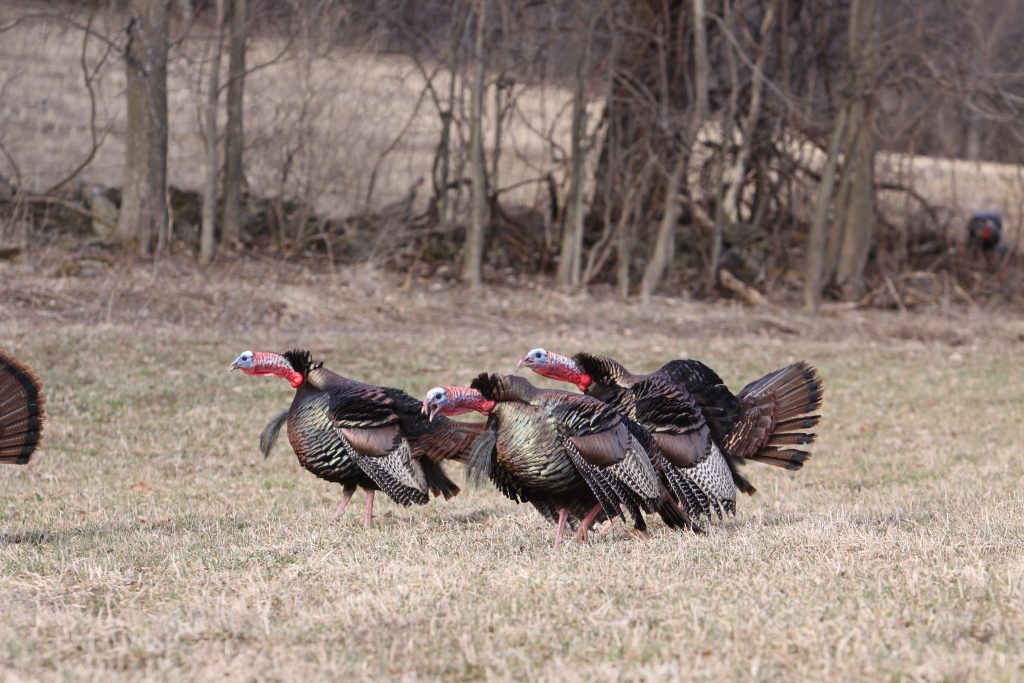What Makes The Gobble Special — And How To Keep It That Way
This iconic sound reverberates through the turkey woods every spring. But it wasn’t always that way, and today’s hunters must be diligent to ensure that the gobble continues.
Perspective typically arises from experience, so it’s sometimes easy to take good situations for granted. Consider the gobble of the wild turkey — a sound commonly enjoyed each year by millions of hunters and wildlife enthusiasts. It’s one of the most recognizable wildlife vocalizations in North America, and many people believe it epitomizes spring in the outdoors.
But that wasn’t always true. In fact, the gobbling of turkeys was scarce not that long ago. And despite the triumphs conservationists have experienced in restoring this iconic sound to the landscape, many challenges remain.
Decline, Restoration, and Then …
Some biologists estimate that more than 10 million turkeys roamed North America before European colonization, and their range extended from Mexico to Canada. But as early settlers increased and pushed westward, they felled forests, otherwise altered turkey habitat and engaged in unregulated subsistence hunting, all of which contributed to a steep decline in turkey numbers. By the late 1930s, the entire population of turkeys in the United States was as low as 250,000. By the 1940s, turkeys were almost extirpated from Canada and only existed in pockets of the United States.
Wildlife officials responded by setting strict hunting regulations, and enacting habitat restoration efforts and turkey reintroduction projects. Early efforts to replenish wild bird populations with game-farm turkeys failed, but biologists soon learned that trap-andtransfer programs — live-trapping wild turkeys and then relocating them to other suitable habitat — helped populations grow and expand. The efforts slowly paid dividends, but even by 1973, when the National Wild Turkey Federation was founded, there were only about 1.3 million turkeys in America, and just 22 states held a spring gobbler season. However, with better science and the combined efforts of NWTF volunteers, state agencies and other conservation groups, turkey populations began to show steady progress. By the late 1990s and early 2000s, an estimated 7 million-plus turkeys roamed the United States, and 49 states held a spring season. That era saw a corresponding boom in turkey hunter numbers and harvests, as folks across the country began to participate in the exciting new pursuit. In fact, a few generations of turkey hunters have only experienced the post-restoration boom times and unprecedented hunting opportunity.
But troubling trends soon crashed the party. Turkey populations in some areas, along with spring and fall harvests, began to decline from about 2004 through 2009. The 2015 NWTF Wild Turkey Status Update also indicated declining turkey populations, and spring gobbler harvests and turkey hunter numbers were down correspondingly. Many states in the Southeast seemed to experience the sharpest declines. Since then, several states have changed or eliminated fall seasons, and adjusted spring limits, opening dates and season structures in an attempt to halt the downward trend. Meanwhile, researchers continue to search for causes and solutions for the problem.
The Moral
Recent setbacks are concerning, but it’s not like turkeys are going extinct. They simply face more challenges nowadays, including habitat loss, increasing urbanization and the ever-present threat of predation. If anything, the trend should remind turkey hunters — especially young folks who never experienced the lean times before turkey population booms — how far we’ve come and how fragile many turkey populations remain. And that prompts an obvious question: What must we do to make sure we continue to hear those sought-after gobbles each spring? Rob Keck, who led the NWTF for 25 years as its CEO, said the answer lies in the sense of stewardship so prevalent in the turkey hunting community.
“I think there’s a lot of the newer generation that just take for granted that we’ve just had this forever,” he said. “We need to impart on them their responsibility to manage, support, share and to continue this legacy of what we have enjoyed now since the late 1970s and into the present time.”
Dr. James Earl Kennamer, retired chief conservation officer of the NWTF, who hunted turkeys with his father years ago in Alabama and Georgia when many other states didn’t have a season, said the modern generation of turkey hunters must learn from the past and perhaps adjust their expectations of today’s hunt.
“In any sport, you want the best equipment to compete and be better than your opponent,” he said. “But when I grew up, it was the hunt itself that made the whole deal. I wanted to do it on my terms, kind of like the fly-fisherman. I’m not going to have every gimmick in the world. I want to play with him on his terms and try to kill him. I think we’ve lost a lot of that in this day and time. It’s a numbers game. It’s become how many turkeys can I put on the lodge pole as opposed to why do it to begin with.”

Going Forward
Some people might question why outdoorsmen and women should care so much about turkey numbers and the turkey hunting heritage. First, thriving turkey populations are an indicator of a healthy broader ecosystem, complete with adequate roosting timber, nesting and brood-rearing habitat, and abundant natural forage. Further, turkey hunting’s legacy has always been steeped in conservation, with concerned hunters — mostly volunteers — giving of their voices, time, money and sweat to ensure the continued success of America’s No. 1 game bird.
That’s a great lesson from yesteryear and an important notion for the new generation of hunters. And when young, up-and-coming turkey nuts consider the importance of that gobble, there’s little doubt they’ll do whatever is necessary to make sure it continues for their lifetimes and beyond.
